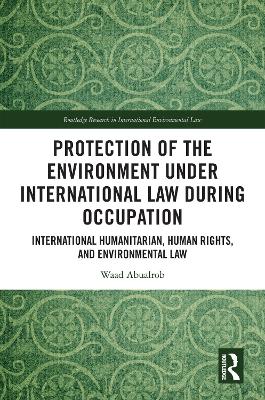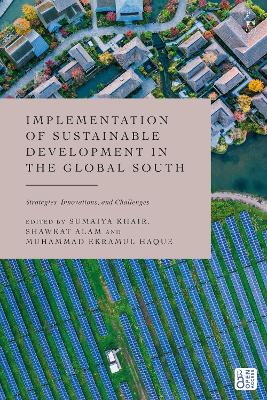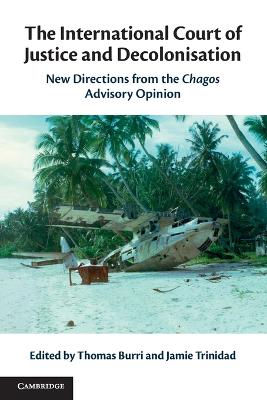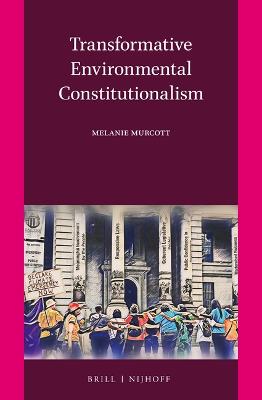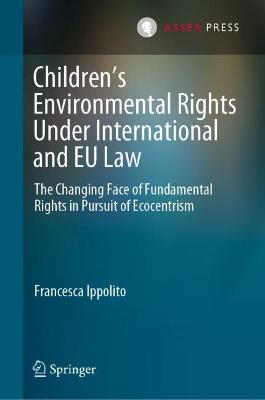Climate Change, Disasters and People on the Move
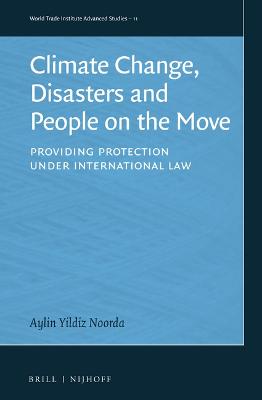 portes grátis
portes grátis
Climate Change, Disasters and People on the Move
Providing Protection under International Law
Noorda, Aylin Yildiz
Brill
09/2022
256
Dura
Inglês
9789004522268
15 a 20 dias
1
Descrição não disponível.
Acknowledgements??
Abbreviations and Acronyms??
Table of Materials??
Introduction??
1???The Need to Provide International Protection to Persons Mobile in the Context of Disasters and Climate Change??
?1?Human Mobility in the Context of Disasters and Climate Change as a Complex Problem
?2?International Protection as a Solution
?2.1?The Notion of International Protection in International Law??
?2.2?Conceptualising the International Protection of Persons Mobile in the Context of Disasters and Climate Change??
?3?Towards International Protection: The Global Compact on Refugees and the Global Compact for Safe, Orderly and Regular Migration
?3.1?The Notion of a Global Compact??
?3.2?International Protection and the Global Compact on Refugees??
?3.3?International Protection and the Global Compact for Safe, Orderly and Regular Migration??
?3.4?Future Implications??
?4?Conclusion
2???Mapping the Legal Gaps??
?1?Relevant International Treaty Regimes
?1.1?International Refugee Regime??
?1.2?International Climate Change Regime??
?1.3?International Desertification Regime??
?1.4?International Labour Regime??
?1.5?International Trade Regime??
?1.6?International Human Rights Regimes??
?2?Relevant International Rules and Principles
?2.1?Non-refoulement??
?2.2?Protection in the Event of Displacement??
?2.3?Protection in the Event of Disasters??
?3?A Novel Challenge: Sea-Level Rise and International Law
?4?Conclusion
3???Legal Gaps in Action - Insights from the Pacific Island States??
?1?Setting the Scene
?2?Human Mobility in the Context of Disasters and Climate Change in the Region
?2.1?Comparing the Pathways for Inter- and Intra-regional Movement??
?2.2?The Prospects for a 'Regional' Approach to Human Mobility: ?pacer? Plus, Free Movement and Labour Mobility??
?3?Learning from the Domestic Approaches to Protection
?3.1?The Notion of Planned Relocation and the Pacific Island States??
?3.2?Planned Relocation Policy of Vanuatu??
?3.3?Planned Relocation Policy of Fiji??
?4?Conclusion
4???The International Protection of Persons Mobile in the Context of Disasters and Climate Change as a Community Interest??
?1?The Theory of Community Interests in International Law
?1.1?Revival and Content??
?1.2?Legal Effects: Obligations Erga Omnes as a Reflection of Community Interests??
?2?Application of a Community Interest Approach: Towards an Obligation Erga Omnes? to Protect Persons Mobile in the Context of Disasters and Climate Change
?2.1?Identification??
?2.2?Pathways to Using the Existing Procedural Aspects of International Law??
?2.3?Pathways to Using the Follow-Up and Review Mechanisms of the Global Compact for Migration and the Global Compact on Refugees??
?3?Conclusion
5???The International Protection of Persons Mobile in the Context of Disasters and Climate Change as a Common Concern of Humankind??
?1?The Theory of the Common Concern of Humankind in International Law
?1.1?Emergence and Expressions??
?1.2?Legal Effects: Treaty Regimes as a Reflection of Common Concerns??
?2?The Application of a Common Concern Approach: Towards a New Treaty Regime
?2.1?A Novel Duty to Cooperate??
?2.2?A Novel Duty to Act??
?3?Conclusion
Conclusion ?Summary and Outlook???
?1?International Protection and Human Mobility in the Context of Disasters and Climate Change
?2?Lessons Learnt about Community Interests and Common Concerns
?3?Outlook
Bibliography??
Index??
Abbreviations and Acronyms??
Table of Materials??
Introduction??
1???The Need to Provide International Protection to Persons Mobile in the Context of Disasters and Climate Change??
?1?Human Mobility in the Context of Disasters and Climate Change as a Complex Problem
?2?International Protection as a Solution
?2.1?The Notion of International Protection in International Law??
?2.2?Conceptualising the International Protection of Persons Mobile in the Context of Disasters and Climate Change??
?3?Towards International Protection: The Global Compact on Refugees and the Global Compact for Safe, Orderly and Regular Migration
?3.1?The Notion of a Global Compact??
?3.2?International Protection and the Global Compact on Refugees??
?3.3?International Protection and the Global Compact for Safe, Orderly and Regular Migration??
?3.4?Future Implications??
?4?Conclusion
2???Mapping the Legal Gaps??
?1?Relevant International Treaty Regimes
?1.1?International Refugee Regime??
?1.2?International Climate Change Regime??
?1.3?International Desertification Regime??
?1.4?International Labour Regime??
?1.5?International Trade Regime??
?1.6?International Human Rights Regimes??
?2?Relevant International Rules and Principles
?2.1?Non-refoulement??
?2.2?Protection in the Event of Displacement??
?2.3?Protection in the Event of Disasters??
?3?A Novel Challenge: Sea-Level Rise and International Law
?4?Conclusion
3???Legal Gaps in Action - Insights from the Pacific Island States??
?1?Setting the Scene
?2?Human Mobility in the Context of Disasters and Climate Change in the Region
?2.1?Comparing the Pathways for Inter- and Intra-regional Movement??
?2.2?The Prospects for a 'Regional' Approach to Human Mobility: ?pacer? Plus, Free Movement and Labour Mobility??
?3?Learning from the Domestic Approaches to Protection
?3.1?The Notion of Planned Relocation and the Pacific Island States??
?3.2?Planned Relocation Policy of Vanuatu??
?3.3?Planned Relocation Policy of Fiji??
?4?Conclusion
4???The International Protection of Persons Mobile in the Context of Disasters and Climate Change as a Community Interest??
?1?The Theory of Community Interests in International Law
?1.1?Revival and Content??
?1.2?Legal Effects: Obligations Erga Omnes as a Reflection of Community Interests??
?2?Application of a Community Interest Approach: Towards an Obligation Erga Omnes? to Protect Persons Mobile in the Context of Disasters and Climate Change
?2.1?Identification??
?2.2?Pathways to Using the Existing Procedural Aspects of International Law??
?2.3?Pathways to Using the Follow-Up and Review Mechanisms of the Global Compact for Migration and the Global Compact on Refugees??
?3?Conclusion
5???The International Protection of Persons Mobile in the Context of Disasters and Climate Change as a Common Concern of Humankind??
?1?The Theory of the Common Concern of Humankind in International Law
?1.1?Emergence and Expressions??
?1.2?Legal Effects: Treaty Regimes as a Reflection of Common Concerns??
?2?The Application of a Common Concern Approach: Towards a New Treaty Regime
?2.1?A Novel Duty to Cooperate??
?2.2?A Novel Duty to Act??
?3?Conclusion
Conclusion ?Summary and Outlook???
?1?International Protection and Human Mobility in the Context of Disasters and Climate Change
?2?Lessons Learnt about Community Interests and Common Concerns
?3?Outlook
Bibliography??
Index??
Este título pertence ao(s) assunto(s) indicados(s). Para ver outros títulos clique no assunto desejado.
Acknowledgements??
Abbreviations and Acronyms??
Table of Materials??
Introduction??
1???The Need to Provide International Protection to Persons Mobile in the Context of Disasters and Climate Change??
?1?Human Mobility in the Context of Disasters and Climate Change as a Complex Problem
?2?International Protection as a Solution
?2.1?The Notion of International Protection in International Law??
?2.2?Conceptualising the International Protection of Persons Mobile in the Context of Disasters and Climate Change??
?3?Towards International Protection: The Global Compact on Refugees and the Global Compact for Safe, Orderly and Regular Migration
?3.1?The Notion of a Global Compact??
?3.2?International Protection and the Global Compact on Refugees??
?3.3?International Protection and the Global Compact for Safe, Orderly and Regular Migration??
?3.4?Future Implications??
?4?Conclusion
2???Mapping the Legal Gaps??
?1?Relevant International Treaty Regimes
?1.1?International Refugee Regime??
?1.2?International Climate Change Regime??
?1.3?International Desertification Regime??
?1.4?International Labour Regime??
?1.5?International Trade Regime??
?1.6?International Human Rights Regimes??
?2?Relevant International Rules and Principles
?2.1?Non-refoulement??
?2.2?Protection in the Event of Displacement??
?2.3?Protection in the Event of Disasters??
?3?A Novel Challenge: Sea-Level Rise and International Law
?4?Conclusion
3???Legal Gaps in Action - Insights from the Pacific Island States??
?1?Setting the Scene
?2?Human Mobility in the Context of Disasters and Climate Change in the Region
?2.1?Comparing the Pathways for Inter- and Intra-regional Movement??
?2.2?The Prospects for a 'Regional' Approach to Human Mobility: ?pacer? Plus, Free Movement and Labour Mobility??
?3?Learning from the Domestic Approaches to Protection
?3.1?The Notion of Planned Relocation and the Pacific Island States??
?3.2?Planned Relocation Policy of Vanuatu??
?3.3?Planned Relocation Policy of Fiji??
?4?Conclusion
4???The International Protection of Persons Mobile in the Context of Disasters and Climate Change as a Community Interest??
?1?The Theory of Community Interests in International Law
?1.1?Revival and Content??
?1.2?Legal Effects: Obligations Erga Omnes as a Reflection of Community Interests??
?2?Application of a Community Interest Approach: Towards an Obligation Erga Omnes? to Protect Persons Mobile in the Context of Disasters and Climate Change
?2.1?Identification??
?2.2?Pathways to Using the Existing Procedural Aspects of International Law??
?2.3?Pathways to Using the Follow-Up and Review Mechanisms of the Global Compact for Migration and the Global Compact on Refugees??
?3?Conclusion
5???The International Protection of Persons Mobile in the Context of Disasters and Climate Change as a Common Concern of Humankind??
?1?The Theory of the Common Concern of Humankind in International Law
?1.1?Emergence and Expressions??
?1.2?Legal Effects: Treaty Regimes as a Reflection of Common Concerns??
?2?The Application of a Common Concern Approach: Towards a New Treaty Regime
?2.1?A Novel Duty to Cooperate??
?2.2?A Novel Duty to Act??
?3?Conclusion
Conclusion ?Summary and Outlook???
?1?International Protection and Human Mobility in the Context of Disasters and Climate Change
?2?Lessons Learnt about Community Interests and Common Concerns
?3?Outlook
Bibliography??
Index??
Abbreviations and Acronyms??
Table of Materials??
Introduction??
1???The Need to Provide International Protection to Persons Mobile in the Context of Disasters and Climate Change??
?1?Human Mobility in the Context of Disasters and Climate Change as a Complex Problem
?2?International Protection as a Solution
?2.1?The Notion of International Protection in International Law??
?2.2?Conceptualising the International Protection of Persons Mobile in the Context of Disasters and Climate Change??
?3?Towards International Protection: The Global Compact on Refugees and the Global Compact for Safe, Orderly and Regular Migration
?3.1?The Notion of a Global Compact??
?3.2?International Protection and the Global Compact on Refugees??
?3.3?International Protection and the Global Compact for Safe, Orderly and Regular Migration??
?3.4?Future Implications??
?4?Conclusion
2???Mapping the Legal Gaps??
?1?Relevant International Treaty Regimes
?1.1?International Refugee Regime??
?1.2?International Climate Change Regime??
?1.3?International Desertification Regime??
?1.4?International Labour Regime??
?1.5?International Trade Regime??
?1.6?International Human Rights Regimes??
?2?Relevant International Rules and Principles
?2.1?Non-refoulement??
?2.2?Protection in the Event of Displacement??
?2.3?Protection in the Event of Disasters??
?3?A Novel Challenge: Sea-Level Rise and International Law
?4?Conclusion
3???Legal Gaps in Action - Insights from the Pacific Island States??
?1?Setting the Scene
?2?Human Mobility in the Context of Disasters and Climate Change in the Region
?2.1?Comparing the Pathways for Inter- and Intra-regional Movement??
?2.2?The Prospects for a 'Regional' Approach to Human Mobility: ?pacer? Plus, Free Movement and Labour Mobility??
?3?Learning from the Domestic Approaches to Protection
?3.1?The Notion of Planned Relocation and the Pacific Island States??
?3.2?Planned Relocation Policy of Vanuatu??
?3.3?Planned Relocation Policy of Fiji??
?4?Conclusion
4???The International Protection of Persons Mobile in the Context of Disasters and Climate Change as a Community Interest??
?1?The Theory of Community Interests in International Law
?1.1?Revival and Content??
?1.2?Legal Effects: Obligations Erga Omnes as a Reflection of Community Interests??
?2?Application of a Community Interest Approach: Towards an Obligation Erga Omnes? to Protect Persons Mobile in the Context of Disasters and Climate Change
?2.1?Identification??
?2.2?Pathways to Using the Existing Procedural Aspects of International Law??
?2.3?Pathways to Using the Follow-Up and Review Mechanisms of the Global Compact for Migration and the Global Compact on Refugees??
?3?Conclusion
5???The International Protection of Persons Mobile in the Context of Disasters and Climate Change as a Common Concern of Humankind??
?1?The Theory of the Common Concern of Humankind in International Law
?1.1?Emergence and Expressions??
?1.2?Legal Effects: Treaty Regimes as a Reflection of Common Concerns??
?2?The Application of a Common Concern Approach: Towards a New Treaty Regime
?2.1?A Novel Duty to Cooperate??
?2.2?A Novel Duty to Act??
?3?Conclusion
Conclusion ?Summary and Outlook???
?1?International Protection and Human Mobility in the Context of Disasters and Climate Change
?2?Lessons Learnt about Community Interests and Common Concerns
?3?Outlook
Bibliography??
Index??
Este título pertence ao(s) assunto(s) indicados(s). Para ver outros títulos clique no assunto desejado.

